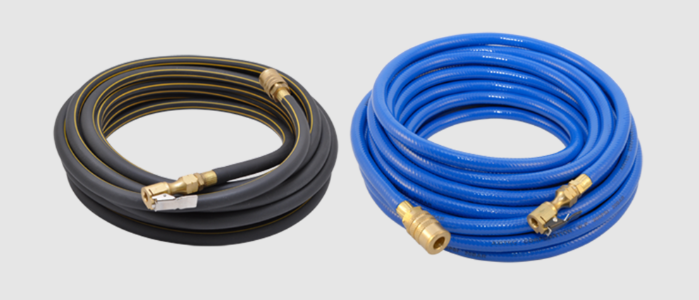Pneumatic hose play a crucial role in various industries, delivering compressed air to power tools, machinery, and equipment. However, like any component, they can wear out over time, leading to inefficiencies, safety hazards, and costly downtime. To ensure optimal performance and safety, it’s essential to recognize the signs indicating when it’s time to replace your hose. Here are five telltale signs to watch out for:
1. Visible Damage
Inspect your hose regularly for visible signs of wear and tear, such as cracks, abrasions, or bulges. These are indicators that the hose’s integrity has been compromised, increasing the risk of leaks, bursts, and accidents. If you notice any visible damage, it’s best to replace the hose immediately to prevent further damage and ensure safe operation.
2. Leaks
Leaks in a hose can result in a loss of pressure, reducing the efficiency and effectiveness of your pneumatic system. Common signs of leaks include hissing sounds, reduced air pressure, and visible air escaping from the hose. Even small leaks can lead to significant energy waste and increased operating costs. If you detect any leaks, it’s crucial to replace the hose promptly to maintain optimal performance.
3. Abrupt Changes in Performance
If you experience sudden drops in air pressure or inconsistencies in tool performance, it could be a sign of internal damage or blockages within the hose. These issues can disrupt workflow, compromise productivity, and pose safety risks to operators. To restore reliable performance and prevent further complications, consider replacing the pneumatic hose to ensure smooth operation.
4. Excessive Flexing or Twisting
They are designed to withstand a certain degree of flexing and twisting during operation. However, excessive bending or kinking can cause the hose to weaken and eventually fail. If you notice that your pneumatic hose is consistently subjected to excessive flexing or twisting, it may be time to replace it with a more durable and flexible alternative.
5. Age and Usage
Like all equipment, these hoses have a limited lifespan, which can vary depending on factors such as material quality, environmental conditions, and usage frequency. As hoses age, they become more susceptible to wear and deterioration, increasing the likelihood of failure. If your hose is nearing the end of its expected lifespan or has been in use for an extended period, it’s advisable to replace it as a preventive measure.
Conclusion
In conclusion, recognizing the signs indicating when it’s time to replace your pneumatic hose is essential for maintaining safety, efficiency, and productivity in your operations. By staying vigilant and addressing issues promptly, you can prevent costly downtime, minimize the risk of accidents, and ensure the longevity of your pneumatic system. So, don’t wait for a catastrophic failure to occur—take proactive steps to replace worn or damaged hoses and keep your operations running smoothly.

